How do cortisol and stress affect blood sugar?
The hormone insulin regulates blood sugar. Insulin is like a key that unlocks our cells, allowing glucose to enter. This lowers blood sugar. In addition to insulin, cortisol (the stress hormone) is also responsible for blood sugar regulation. Unlike insulin, cortisol causes blood sugar to rise. We have our ancestors to thank for this mechanism. Thanks to cortisol, we could quickly run away from a mammoth in response to stress without having to eat or drink anything beforehand. Nowadays, however, stressful situations are more likely to be meetings, deadlines, or other tasks, and rarely physically challenging. So while blood sugar rises, it is not used up through physical activity.
This stress is reflected in your blood sugar levels. So, if you tend to get little exercise in your busy daily routine, you should consciously take the time to incorporate some daily exercise, such as a walk, a few squats, or washing the dishes by hand. This is a simple way to lower your blood sugar. Exercise and relaxation can help balance these hormonal changes.
Why is blood sugar balance especially important for women?
This is due to our body's hormonal hierarchy. Insulin and cortisol are so-called master hormones. Next in the hormonal hierarchy are the thyroid hormones, and only then the reproductive hormones, estrogen and progesterone. The latter two regulate the menstrual cycle.When blood sugar levels become unbalanced, the body reacts primarily to the signals of the master hormones: insulin and cortisol. All other hormones are adjusted accordingly.
However, when blood sugar is balanced, the body is more likely to respond to the signals of estrogen and progesterone and thus focus on cycle health.
The interaction of cycle and insulin sensitivity
There's a fascinating relationship between our cycle phase and our response to sugar. In the first half of our cycle, there's more estrogen than progesterone, and insulin sensitivity increases. This shift changes in the second half. Women often experience this change shortly before their period through cravings and mood swings.
If you then reach for chocolate, a blood sugar vicious cycle can develop. Reduced insulin sensitivity means blood sugar can rise and fall repeatedly. This roller coaster makes you tired and promotes cravings, PMS, and period cramps.
How to balance hormones and blood sugar
Get to know your body with a combination of hormone testing and continuous blood sugar tracking. With Hello Inside , you can discover what's good for your body and balance your blood sugar to get through the day energized and free from PMS or cravings. Blood sugar tracking offers you the opportunity to better understand your body and improve your well-being.
For an even deeper insight into your hormone balance, the cerascreen test kits are ideal. These test kits allow you to measure various parameters, including vitamins, minerals, blood lipids, and hormones, without a doctor's visit or long waiting times. They also provide information about allergies and intolerances, as well as insights into your gut flora. The combination of these approaches allows you to take a holistic view of your health and improve your well-being with simple measures.
Want to learn more about the connection between stress, blood sugar, and women's health? Then listen to the latest episode of the Cerascreen Podcast . Marie-Luise Huber was our guest to discuss the important role of insulin, cortisol, and menstrual health.




